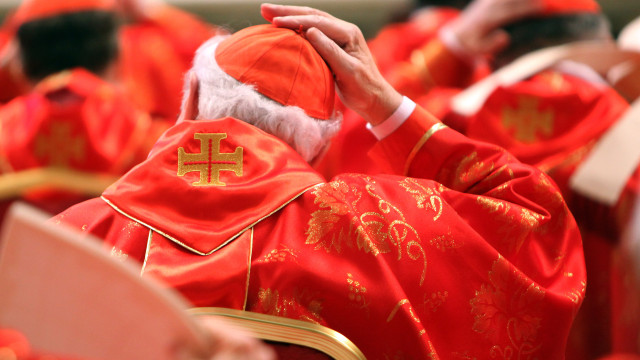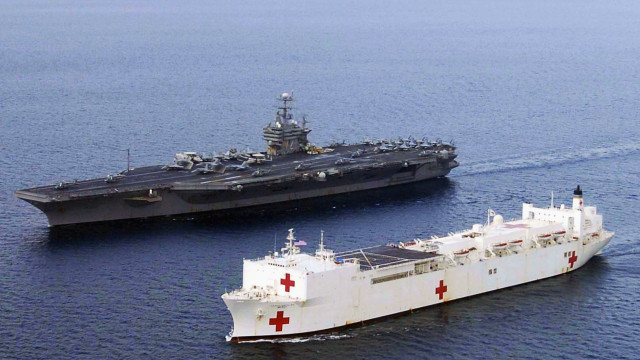






























See Also
See Again
© Getty Images
0 / 31 Fotos
MI5 - the Security Service
- MI5, officially the Security Service, is the United Kingdom's domestic counter-intelligence and security agency. Their premises is located in Thames House, in central London.
© Shutterstock
1 / 31 Fotos
Sir Francis Walsingham (c. 1532–1590)
- MI5's predecessor was a secret service formed in 1569 by Sir Francis Walsingham, principal secretary to Queen Elizabeth I from 1573 till 1590. Popularly remembered as her "spymaster," Walsingham is frequently cited as one of the earliest practitioners of modern intelligence methods both for espionage and for domestic security.
© Getty Images
2 / 31 Fotos
Sir Vernon Kell (1873–1942)
- MI5 has existed, in various forms, since 1909, established as the Secret Service Bureau under the leadership of Captain (later Major General) Sir Vernon Kell.
© Getty Images
3 / 31 Fotos
MI5 in the First World War
- At the start of the First World War, MI5 was tasked with the rounding up and arrest of enemy spies, or suspected enemy agents.
© Getty Images
4 / 31 Fotos
Carl Hans Lody
- One of these was a man called Carl Hans Lody, a reserve officer of the Imperial German Navy who spied in Britain and Ireland during the early months of the conflict.
© Public Domain
5 / 31 Fotos
A spy is executed
- Lody, who operated under the alias Charles Inglis, was eventually caught and charged with "war treason." He was put on public trial— the only one held for a German spy captured in the UK in either World War—before a military court in London (pictured). Found guilty of espionage, Lody was executed on November 6, 1914.
© Public Domain
6 / 31 Fotos
The post-war years
- The immediate post-war years saw a reduction in MI5 staffing numbers, but throughout the 1920s the agency proved consistently successful in its core counter-espionage role. The name MI5 originated during this period, when the bureau was "section five" of military intelligence.
© Getty Images
7 / 31 Fotos
Soviet infiltration
- In the late 1920s after a surveillance operation, MI5 revealed that the Special Branch, a unit of London's Metropolitan Police, had been penetrated by Soviet intelligence. As a result of this embarrassing disclosure, full responsibility for counter-subversion was transferred to MI5.
© Getty Images
8 / 31 Fotos
Fighting the Nazis
- Europe in the 1930s saw the rise of fascism. The London embassy of Nazi Germany was successfully penetrated by MI5 with its most important source, the anti-Nazi German diplomat Wolfgang zu Putlitz, providing vital information about Adolf Hitler's war plans and the movements of the German ambassador Joachim von Ribbentrop (pictured).
© Getty Images
9 / 31 Fotos
Fascists under surveillance
- MI5 also had considerable success infiltrating British fascist movements during this period. The British Union of Fascists and its leader, Oswald Mosley, were regularly placed under surveillance.
© Getty Images
10 / 31 Fotos
Arrest of Klaus Fuchs
- Diligent undercover work undertaken by MI5 officers during the Second World War claimed a number of high-profile scalps, including that of Klaus Fuchs, who supplied information from the Manhattan Project to the Soviets.
© Getty Images
11 / 31 Fotos
The Cambridge Five
- One of MI5's most significant failures, however, was an inability to detect and expose the Cambridge Five, active from the 1930s until the early '50s. Guy Burgess (pictured), Harold 'Kim' Philby, Donald Mclean, Anthony Blunt, and John Cairncross were all eventually exposed as Soviet spies. None of the known members were ever prosecuted for spying.
© Getty Images
12 / 31 Fotos
Portland spy ring
- The arrest, trial, and conviction in 1961 of five Soviet spies, all members of the Portland spy ring, helped restore MI5's tarnished reputation. The group's handler, Konon Molody—who was acting under the name Gordon Lonsdale—was a KGB agent.
© Getty Images
13 / 31 Fotos
Domestic terrorist threats
- As the Cold War ended, the Security Service assumed responsibility for the investigation of all Irish republican activity within Britain during "The Troubles," and wider domestic terrorist threats within the United Kingdom.
© Getty Images
14 / 31 Fotos
Working with GCHQ
- Today, counterterrorism operations account for much of MI5's activities. The UK's Government Communications Headquarters (GCHQ) has a long history of working with MI5 and MI6. But what exactly is the role of MI6?
© Getty Images
15 / 31 Fotos
MI6 - the Secret Intelligence Service
- MI6, officially known as the Secret Intelligence Service (SIS), is the foreign intelligence service of the United Kingdom. MI6 is headquartered in the SIS building in London.
© Shutterstock
16 / 31 Fotos
Mansfield Cumming (1859–1923)
- MI6 derived from the Secret Service Bureau (MI5), and was also founded in 1909. Its first director was British naval officer Mansfield Cumming.
© Public Domain
17 / 31 Fotos
MI6 in the First World War
- During the First World War, MI6 had its main European office in Rotterdam, from where it coordinated espionage in Germany and occupied Belgium. One of its main objectives was ascertaining the maritime strength of the Imperial German Navy.
© Getty Images
18 / 31 Fotos
Battle of Jutland
- MI6, which throughout this period briefly became the section MI1(c) of the Directorate of Military Intelligence, recruited Karl Krüger, a former German naval officer, who provided vital intelligence to the British, including crucial revelations regarding German losses at the Battle of Jutland in 1916.
© NL Beeld
19 / 31 Fotos
La Dame Blanche
- In 1917, Cumming's organization began running La Dame Blanche, a network of German spies in occupied Belgium established the previous year by Walthère Dewé and Hector Demarque. Its members passed on valuable information on German troop movements. During the conflict, Dame Blanche supplied as much as 70% of all military intelligence collected by Allied intelligence services worldwide.
© Getty Images
20 / 31 Fotos
Sir Paul Dukes (1889–1967)
- The emergence of the Bolsheviks in Russia and their establishment of a communist state refocused the service's attention to Moscow. MI6 officer Sir Paul Dukes based himself in Petrograd (modern-day St. Petersburg), where he monitored the movements of the Baltic Fleet. He later successfully infiltrated the Communist Party of the Soviet Union, the Comintern, and even the political police.
© Getty Images
21 / 31 Fotos
"Section six"
- In the 1930s following the ascent of Adolf Hitler, the SIS turned its attention to defeating the Nazis. The origins of the use of the name MI6 are to be found at the start of the Second World War, when the agency was "section six" of military intelligence.
© Shutterstock
22 / 31 Fotos
Bletchley Park
- In 1938, the chief of SIS, Hugh Sinclair, purchased Bletchley Park. This was the base for the service and the Government Code and Cypher School (GC&CS)—the forerunner of GCHQ—during the war, though SIS returned to London shortly afterwards.
© Getty Images
23 / 31 Fotos
Sir Stewart Menzies (1890–1968)
- After Sinclair's death in November 1939, Stewart Menzies took over a service comprising 42 officers and 55 secretaries. As chief, Menzies oversaw a dramatic expansion of both SIS and GC&CS in the fight to defeat the Axis powers.
© Getty Images
24 / 31 Fotos
Marie-Madeleine Fourcade (1909–1989)
- MI6 again called on the services of Walthère Dewé and Hector Demarque in establishing Service Clarence, one of the most successful SIS networks in Belgium during the 1939-45 war. A similar network in occupied France was overseen by Marie-Madeleine Fourcade, the leader of the French Resistance network Alliance.
© Getty Images
25 / 31 Fotos
MI6 and the CIA
- When the United States entered the Second World War, MI6 helped train personnel of the US Office of Strategic Services (OSS). In 1948, OSS' successor, the Central Intelligence Agency (CIA), began working closely with its British counterpart as the Cold War loomed.
© Getty Images
26 / 31 Fotos
Operations compromised
- MI6 was equally appalled when the Cambridge Five spy ring was exposed. Furthermore, the service's operations against the USSR were extensively compromised by the presence of one of the Cambridge Five, Kim Philby, who'd been spying for the Soviet Union and who defected to the Soviets in 1963.
© Getty Images
27 / 31 Fotos
Support of Islamic resistance
- During the Soviet-Afghan War, the Secret Intelligence Service supported the Islamic resistance group. The real scale of SIS operations during the Cold War era has never been revealed and its operations and relationships seldom appeared in the British press until the 1990s.
© Getty Images
28 / 31 Fotos
Transparency
- The Security Service Act 1989 established a statutory basis of the UK Security Service (MI5) for the first time. Prior to the Act, successive UK governments had denied the existence of MI5. Similarly, the Intelligence Services Act 1994 was the first public acknowledgement of the existence of both MI6 and GCHQ.
© Shutterstock
29 / 31 Fotos
Guarded secrets
- Despite this transparency, information about MI6 is still much more closely guarded than that about MI5. The agency has the power to censor news accounts of its activities, and reports directly to the Foreign Office. Sources: (MI5 - The Security Service) (SIS) (Britannica) (The National Archives) See also: Specific rules CIA officers must follow
© Shutterstock
30 / 31 Fotos
© Getty Images
0 / 31 Fotos
MI5 - the Security Service
- MI5, officially the Security Service, is the United Kingdom's domestic counter-intelligence and security agency. Their premises is located in Thames House, in central London.
© Shutterstock
1 / 31 Fotos
Sir Francis Walsingham (c. 1532–1590)
- MI5's predecessor was a secret service formed in 1569 by Sir Francis Walsingham, principal secretary to Queen Elizabeth I from 1573 till 1590. Popularly remembered as her "spymaster," Walsingham is frequently cited as one of the earliest practitioners of modern intelligence methods both for espionage and for domestic security.
© Getty Images
2 / 31 Fotos
Sir Vernon Kell (1873–1942)
- MI5 has existed, in various forms, since 1909, established as the Secret Service Bureau under the leadership of Captain (later Major General) Sir Vernon Kell.
© Getty Images
3 / 31 Fotos
MI5 in the First World War
- At the start of the First World War, MI5 was tasked with the rounding up and arrest of enemy spies, or suspected enemy agents.
© Getty Images
4 / 31 Fotos
Carl Hans Lody
- One of these was a man called Carl Hans Lody, a reserve officer of the Imperial German Navy who spied in Britain and Ireland during the early months of the conflict.
© Public Domain
5 / 31 Fotos
A spy is executed
- Lody, who operated under the alias Charles Inglis, was eventually caught and charged with "war treason." He was put on public trial— the only one held for a German spy captured in the UK in either World War—before a military court in London (pictured). Found guilty of espionage, Lody was executed on November 6, 1914.
© Public Domain
6 / 31 Fotos
The post-war years
- The immediate post-war years saw a reduction in MI5 staffing numbers, but throughout the 1920s the agency proved consistently successful in its core counter-espionage role. The name MI5 originated during this period, when the bureau was "section five" of military intelligence.
© Getty Images
7 / 31 Fotos
Soviet infiltration
- In the late 1920s after a surveillance operation, MI5 revealed that the Special Branch, a unit of London's Metropolitan Police, had been penetrated by Soviet intelligence. As a result of this embarrassing disclosure, full responsibility for counter-subversion was transferred to MI5.
© Getty Images
8 / 31 Fotos
Fighting the Nazis
- Europe in the 1930s saw the rise of fascism. The London embassy of Nazi Germany was successfully penetrated by MI5 with its most important source, the anti-Nazi German diplomat Wolfgang zu Putlitz, providing vital information about Adolf Hitler's war plans and the movements of the German ambassador Joachim von Ribbentrop (pictured).
© Getty Images
9 / 31 Fotos
Fascists under surveillance
- MI5 also had considerable success infiltrating British fascist movements during this period. The British Union of Fascists and its leader, Oswald Mosley, were regularly placed under surveillance.
© Getty Images
10 / 31 Fotos
Arrest of Klaus Fuchs
- Diligent undercover work undertaken by MI5 officers during the Second World War claimed a number of high-profile scalps, including that of Klaus Fuchs, who supplied information from the Manhattan Project to the Soviets.
© Getty Images
11 / 31 Fotos
The Cambridge Five
- One of MI5's most significant failures, however, was an inability to detect and expose the Cambridge Five, active from the 1930s until the early '50s. Guy Burgess (pictured), Harold 'Kim' Philby, Donald Mclean, Anthony Blunt, and John Cairncross were all eventually exposed as Soviet spies. None of the known members were ever prosecuted for spying.
© Getty Images
12 / 31 Fotos
Portland spy ring
- The arrest, trial, and conviction in 1961 of five Soviet spies, all members of the Portland spy ring, helped restore MI5's tarnished reputation. The group's handler, Konon Molody—who was acting under the name Gordon Lonsdale—was a KGB agent.
© Getty Images
13 / 31 Fotos
Domestic terrorist threats
- As the Cold War ended, the Security Service assumed responsibility for the investigation of all Irish republican activity within Britain during "The Troubles," and wider domestic terrorist threats within the United Kingdom.
© Getty Images
14 / 31 Fotos
Working with GCHQ
- Today, counterterrorism operations account for much of MI5's activities. The UK's Government Communications Headquarters (GCHQ) has a long history of working with MI5 and MI6. But what exactly is the role of MI6?
© Getty Images
15 / 31 Fotos
MI6 - the Secret Intelligence Service
- MI6, officially known as the Secret Intelligence Service (SIS), is the foreign intelligence service of the United Kingdom. MI6 is headquartered in the SIS building in London.
© Shutterstock
16 / 31 Fotos
Mansfield Cumming (1859–1923)
- MI6 derived from the Secret Service Bureau (MI5), and was also founded in 1909. Its first director was British naval officer Mansfield Cumming.
© Public Domain
17 / 31 Fotos
MI6 in the First World War
- During the First World War, MI6 had its main European office in Rotterdam, from where it coordinated espionage in Germany and occupied Belgium. One of its main objectives was ascertaining the maritime strength of the Imperial German Navy.
© Getty Images
18 / 31 Fotos
Battle of Jutland
- MI6, which throughout this period briefly became the section MI1(c) of the Directorate of Military Intelligence, recruited Karl Krüger, a former German naval officer, who provided vital intelligence to the British, including crucial revelations regarding German losses at the Battle of Jutland in 1916.
© NL Beeld
19 / 31 Fotos
La Dame Blanche
- In 1917, Cumming's organization began running La Dame Blanche, a network of German spies in occupied Belgium established the previous year by Walthère Dewé and Hector Demarque. Its members passed on valuable information on German troop movements. During the conflict, Dame Blanche supplied as much as 70% of all military intelligence collected by Allied intelligence services worldwide.
© Getty Images
20 / 31 Fotos
Sir Paul Dukes (1889–1967)
- The emergence of the Bolsheviks in Russia and their establishment of a communist state refocused the service's attention to Moscow. MI6 officer Sir Paul Dukes based himself in Petrograd (modern-day St. Petersburg), where he monitored the movements of the Baltic Fleet. He later successfully infiltrated the Communist Party of the Soviet Union, the Comintern, and even the political police.
© Getty Images
21 / 31 Fotos
"Section six"
- In the 1930s following the ascent of Adolf Hitler, the SIS turned its attention to defeating the Nazis. The origins of the use of the name MI6 are to be found at the start of the Second World War, when the agency was "section six" of military intelligence.
© Shutterstock
22 / 31 Fotos
Bletchley Park
- In 1938, the chief of SIS, Hugh Sinclair, purchased Bletchley Park. This was the base for the service and the Government Code and Cypher School (GC&CS)—the forerunner of GCHQ—during the war, though SIS returned to London shortly afterwards.
© Getty Images
23 / 31 Fotos
Sir Stewart Menzies (1890–1968)
- After Sinclair's death in November 1939, Stewart Menzies took over a service comprising 42 officers and 55 secretaries. As chief, Menzies oversaw a dramatic expansion of both SIS and GC&CS in the fight to defeat the Axis powers.
© Getty Images
24 / 31 Fotos
Marie-Madeleine Fourcade (1909–1989)
- MI6 again called on the services of Walthère Dewé and Hector Demarque in establishing Service Clarence, one of the most successful SIS networks in Belgium during the 1939-45 war. A similar network in occupied France was overseen by Marie-Madeleine Fourcade, the leader of the French Resistance network Alliance.
© Getty Images
25 / 31 Fotos
MI6 and the CIA
- When the United States entered the Second World War, MI6 helped train personnel of the US Office of Strategic Services (OSS). In 1948, OSS' successor, the Central Intelligence Agency (CIA), began working closely with its British counterpart as the Cold War loomed.
© Getty Images
26 / 31 Fotos
Operations compromised
- MI6 was equally appalled when the Cambridge Five spy ring was exposed. Furthermore, the service's operations against the USSR were extensively compromised by the presence of one of the Cambridge Five, Kim Philby, who'd been spying for the Soviet Union and who defected to the Soviets in 1963.
© Getty Images
27 / 31 Fotos
Support of Islamic resistance
- During the Soviet-Afghan War, the Secret Intelligence Service supported the Islamic resistance group. The real scale of SIS operations during the Cold War era has never been revealed and its operations and relationships seldom appeared in the British press until the 1990s.
© Getty Images
28 / 31 Fotos
Transparency
- The Security Service Act 1989 established a statutory basis of the UK Security Service (MI5) for the first time. Prior to the Act, successive UK governments had denied the existence of MI5. Similarly, the Intelligence Services Act 1994 was the first public acknowledgement of the existence of both MI6 and GCHQ.
© Shutterstock
29 / 31 Fotos
Guarded secrets
- Despite this transparency, information about MI6 is still much more closely guarded than that about MI5. The agency has the power to censor news accounts of its activities, and reports directly to the Foreign Office. Sources: (MI5 - The Security Service) (SIS) (Britannica) (The National Archives) See also: Specific rules CIA officers must follow
© Shutterstock
30 / 31 Fotos
What's the difference between MI5 and MI6?
Uncovering the work of Britain's security agencies
© <p>Getty Images</p>
The United Kingdom is home to two spy agencies—MI5 and MI6. Both were founded in the early 20th century when the British government was increasingly concerned about the threat to its empire posed by Germany’s imperial ambitions. Agents working for these secret services were used throughout both World Wars, and the subsequent Cold War, when the USSR became the country to watch. But while each share a common aim, namely the defense of the realm, they operate in very different ways.
So, what exactly is the difference between MI5 and MI6? Click through this gallery and uncover some surprising facts about Britain's secretive intelligence agencies.
RECOMMENDED FOR YOU




































MOST READ
- Last Hour
- Last Day
- Last Week








